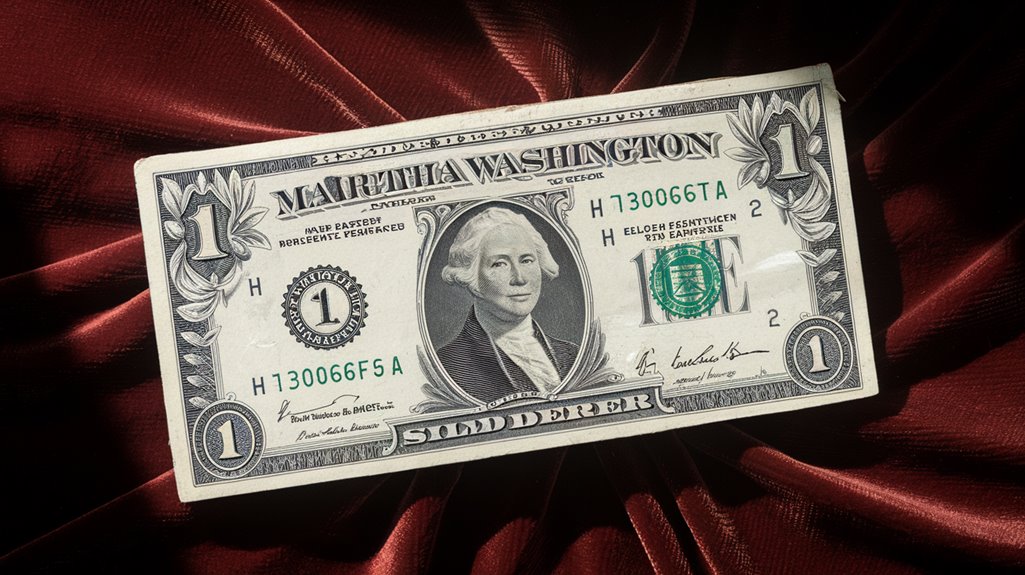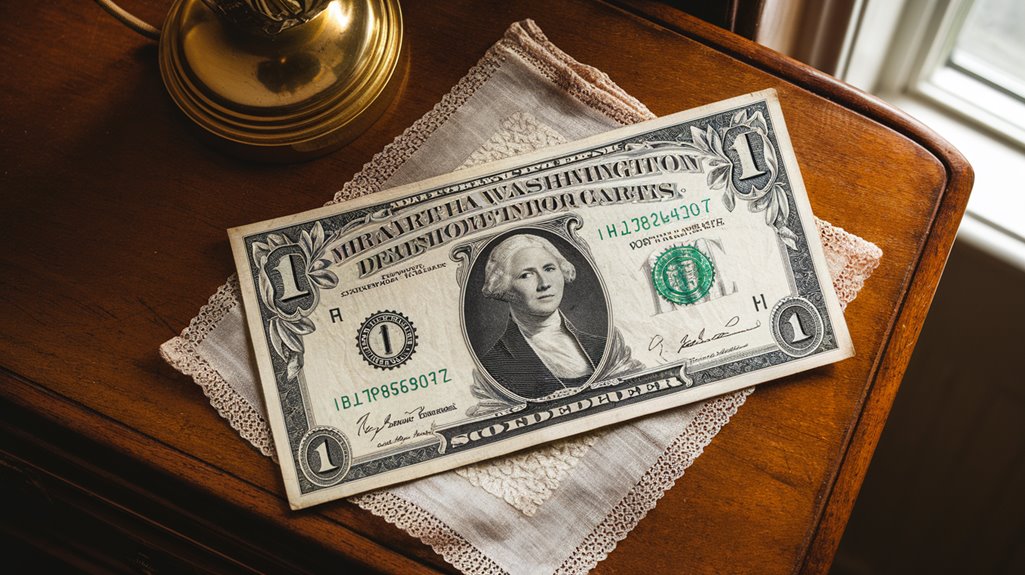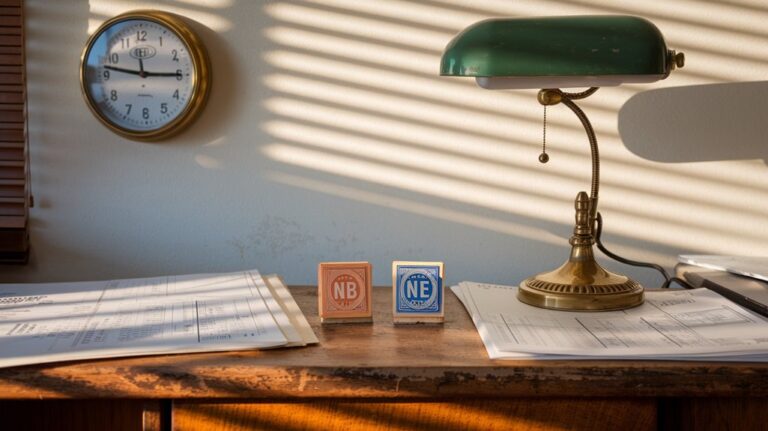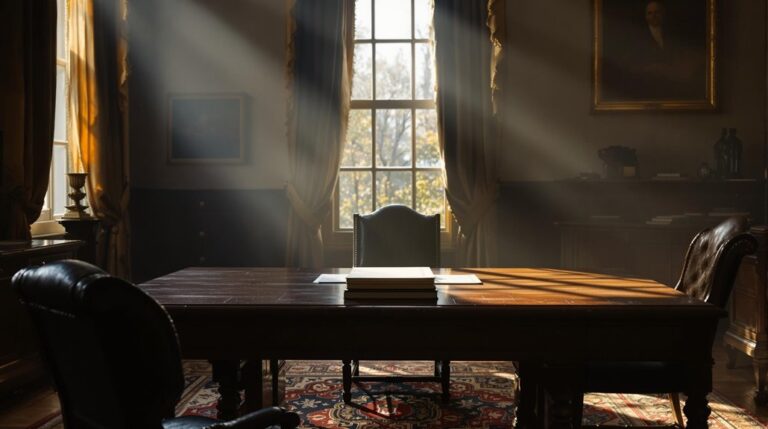Martha Washington Appeared on U.S. Currency
You might recognize George Washington's face on the dollar bill, but did you know his wife Martha made currency history first? In 1886, she became the first and only real woman to grace U.S. paper money when her portrait appeared on the Silver Certificate. While many Americans today aren't familiar with this groundbreaking note, it's a tribute to Martha Washington's influence and opens up fascinating questions about women's representation in American financial history.
Martha Washington's Historical First on the Silver Certificate
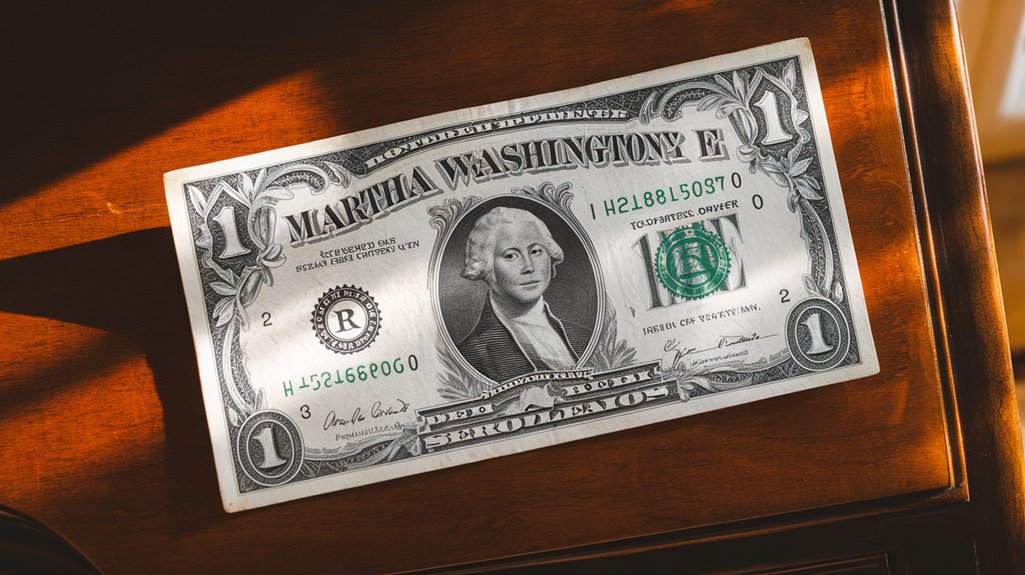
When Congress passed the Coinage Act of 1873, it set in motion a series of events that would lead to Martha Washington's groundbreaking appearance on U.S. paper currency. The act's focus on gold-only coinage sparked debates that eventually resulted in the Bland-Allison Act of 1878, requiring monthly silver purchases.
Martha Washington's significance as the first real woman on U.S. paper currency emerged in 1886 when she was featured on small-denomination silver certificates. The innovation was particularly notable since Pocahontas was previously the only non-symbolic female figure to appear on American paper money. Her image was based on Jalabert's artwork, which provided the foundation for the engraved portrait.
The economic implications were substantial, as these certificates could be redeemed for silver from the U.S. Treasury. Unlike modern currency debates, her appearance garnered widespread public approval, with newspapers praising the design as "the handsomest ever issued."
The Woman's Journal particularly celebrated this milestone, recognizing its importance for the suffragist movement.
The Design and Features of the 1886 Dollar Note
The artistry of the 1886 Silver Certificate marked a milestone in American currency design, featuring Martha Washington's portrait against a pristine white background with green reverse coloring.
You'll notice the design elements were carefully chosen, with Martha's vignette based on Charles François Jalabert's portrait setting a new standard for U.S. currency aesthetics.
The note's security features included high-quality intaglio printing, though this sometimes led to drying issues that caused blurriness.
You can distinguish this note by its unique indicators showing it's backed by silver rather than gold.
The design was so remarkable that newspapers dubbed it "the Handsomest Ever Issued."
While some critics questioned the accuracy of Martha's likeness, the note remained in circulation until 1957, cementing its place in currency history.
The durability of the note was ensured through its composition of 75% cotton, 25% linen.
Martha Washington and her husband George became the only married couple to ever appear together on U.S. paper currency.
Legacy and Impact on Women's Currency Representation
Martha Washington's appearance on the 1886 Silver Certificate set a groundbreaking precedent for women's representation on U.S. currency that would stand unmatched for nearly a century. Her portrayal marked a significant cultural significance, as she remains the only woman to be prominently featured on U.S. paper money to date.
While representation trends have slowly evolved since then, you'll find women's images primarily on coins rather than paper currency. The Susan B. Anthony dollar in 1979 and the Sacagawea dollar in 2000 continued this progress. Maya Angelou became a trailblazer when she was named as the first Black woman to appear on American currency in 2022.
Today, the American Women Quarters Program and the upcoming Harriet Tubman $20 bill reflect a growing recognition of women's contributions. Unlike the relatively uncontroversial decision to feature Martha Washington, modern attempts to diversify currency faces have sparked more public debate.
Comparing Martha Washington's Note With Other Female Currency Icons
Among all historical figures featured on American currency, Martha Washington's appearance on the 1886 $1 Silver Certificate stands distinctly unique compared to other female icons.
Known for its nickname "the Martha", this note became highly sought after by collectors. You'll find her achievement as the first and only woman to appear alone on U.S. paper currency particularly significant when compared to later female representations.
While Pocahontas had appeared within a group on the $20 National Banknotes in the 1860s, it wasn't until Susan B. Anthony's introduction on the dollar coin in 1979 that another woman gained similar prominence. The coin faced challenges as it was often confused with quarters by the public.
Even then, Martha Washington's paper currency representation hasn't been matched. The success of her note helped pave the way for future female representation, including Sacagawea on the golden dollar and the recent American Women Quarters Program, making her role in currency history truly pioneering.
Preservation and Collectible Status in Modern Times
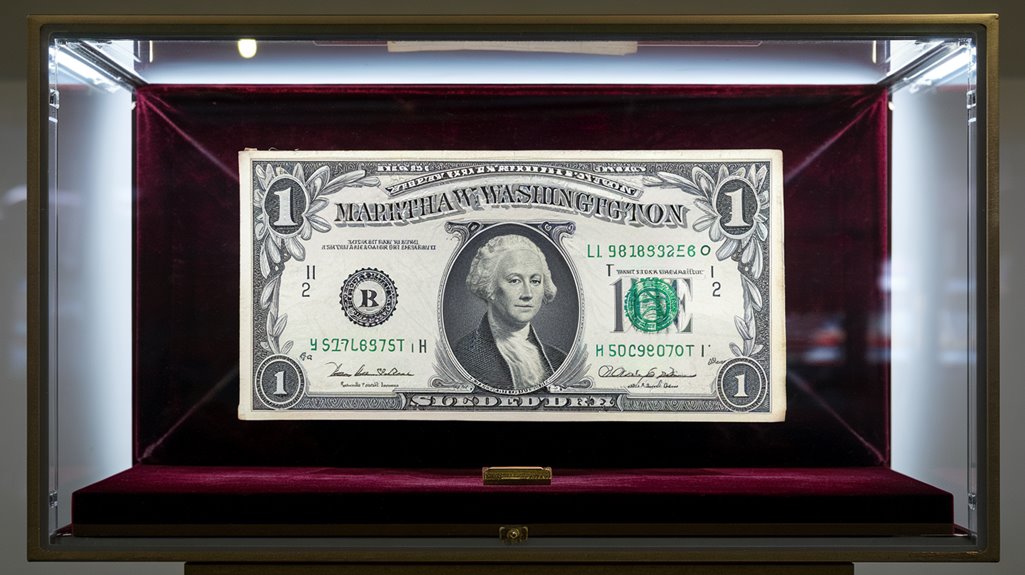
Since their discontinuation in 1957, Martha Washington's Silver Certificates have become highly sought-after pieces in both museum collections and private holdings.
You'll find these historic notes prominently displayed at institutions like Mount Vernon and the St. Louis Fed's Economy Museum, where preservation techniques help maintain their condition for future generations.
Collectible trends show particular interest in the 1886 and 1891 designs, with the 1896 note featuring both Martha and George Washington being especially valuable.
If you're interested in these certificates, you'll need to verify their authenticity and condition, as these factors greatly impact their worth.
The certificates' distinct features, including their white background and green backs, make them unique pieces of American currency history, representing the first time a real woman appeared on U.S. paper money. The rarity and historical significance of these notes are highlighted by the fact that the Bureau of Engraving and Printing now produces an entirely different set of currency, totaling 37 million notes daily.

